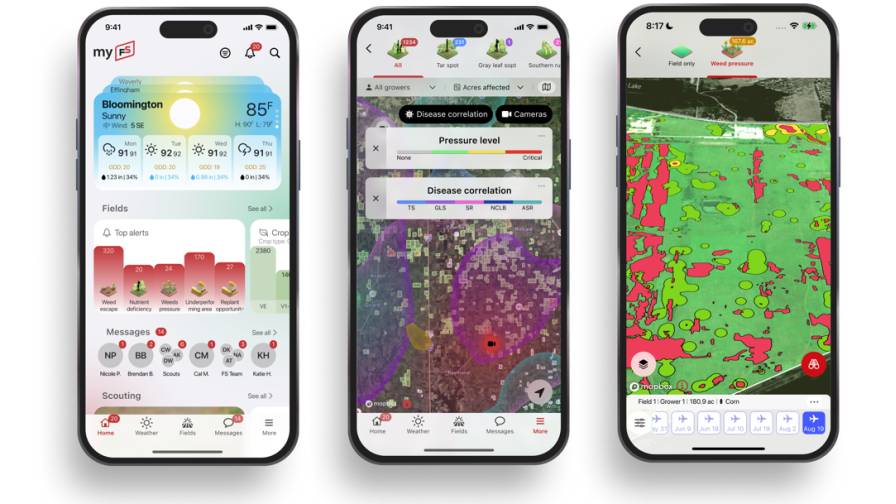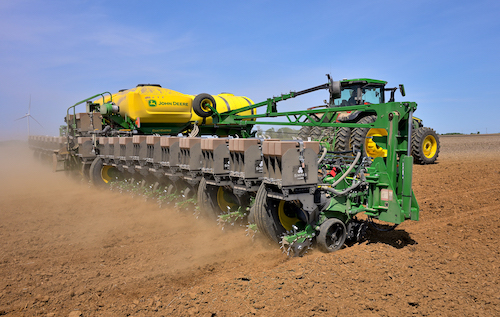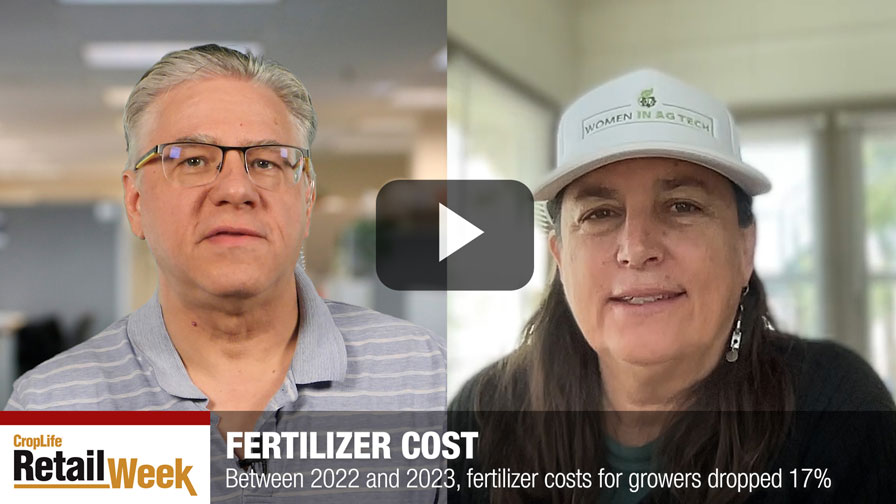The 2020 Commodity Classic: Before Coronavirus, Agriculture ‘More Optimistic’ Heading Into #Plant20
Editor’s note: This article by editors Eric Sfiligoj and Dan Jabobs was written shortly after the 2020 Commodity Classic and pre-COVID-19. Obviously, a lot has changed in agriculture since the outbreak, but it’s interesting to look back just a few short weeks to see what the general sentiment was toward this year’s growing season.
At the end of February, much of the agricultural industry gathered for the annual Commodity Classic show taking place at the Henry B. Gonzales Convention Center in San Antonio, TX. And the spirit of the event seemed very positive. In fact, according to the show organizers, a record number of growers were present at the 2020 Commodity Classic — 4,678, which broke the previous record set at the 2016 show in New Orleans (4,595). In total, 9,350 attendees were at the 2020 Commodity Classic, the second highest attendance figure for the show since the 2016 New Orleans gathering.
In many ways, the positive vibe at the show was set during the keynote address, given by Secretary of Agriculture Sonny Perdue. According to Perdue, U.S. growers have a remarkable track record when it comes to producing products to feed, fuel, and clothe the world’s population. “We’ve been in a miracle of productivity these past 75 years in American agriculture,” he said. “And it’s been stunning in its effect.”
Of course, he added, this strong production in agricultural products has meant that U.S. growers need help from beyond the borders of America to consume and market many of these items — by exporting to various countries around the globe. However, with several high-profile trade disputes dominating the agricultural landscape since the middle of 2018, a layer of uncertainty has been added to the mix for the marketplace. This, in turn, meant that many U.S. growers had to rely on financial assistance through the Market Facilitation Program (MFP) during the 2019 growing season.
But Perdue assured Commodity Classic attendees that recent trade deals will return U.S. agriculture to “market-driven” growth model starting this year. “The United State Mexico Canada Agreement has been signed into law, adding certainty to the North American trade market,” he said. “And we have a $7 billion trade agreement with Japan. In addition, the Phase One China Deal is now there, which includes commitments by China to buy several billion dollars worth of American agricultural products backed up by hardline numbers.
“The MFP payments were a trade damage mechanism that we used to make up for lost income based on the inability to trade,” Perdue continued. “But in 2020, I’m telling you all to do what you do and plant for the market. We believe we will see prices rise as these commodities start to flow again and you need to look at your operation and what really makes sense.”
He did acknowledge, however, there might be some danger to agricultural trade growth from the spread of the coronavirus throughout China and much of the world. “Hopefully, we can get past this coronavirus pandemic very quickly and get back to the trade,” Perdue said.
On a lighter note, at a press conference following the keynote, Perdue was asked about being one of the longer tenured secretaries in the administration of President Donald Trump, and whether he’d be interested in being part of the president’s second term should he be reelected. Perdue responded, noting the tenuousness of government service, saying he works a “24-hour contract” every day. And when he gets up the next morning, he works another 24-hour contact.
Partnerships Aplenty
Perhaps encouraged by the good sentiment at the 2020 Commodity Classic, several key agricultural suppliers announced partnerships at the event aimed at furthering many overall industry causes. For example, crop protection products/seed giant BASF and equipment manufacturer AGCO Corp. announced they are joining forces on the Operation Weed Eradication initiative, designed to help growers to follow best practices for on-farm eradication of herbicide-resistant pigweed.
“We are proud to work with AGCO to give farmers the best cultural and mechanical recommendations to make on-farm eradication of pigweed a priority,” said Scott Kay, Vice President, U.S. Crop, BASF Agricultural Solutions.
“At AGCO, we actively focus on the top agronomic challenges faced by farmers,” said Darren Goebel, Director of Global Agronomy and Farm Solutions. “In some cases, that means developing new sensors, systems, or machines; but in other, it means collaborating with industry partners like BASF, to solve problems together.”
On the technology side, Truterra and Syngenta announced that they are collaborating to offer a step-change in stewardship and conservation best practices to U.S. growers. “We believe this long-term effort will enhance retailers’ experience when serving growers that use the Truterra and AgriEdge systems,” said Jason Weller, Vice President.
Aaron Deardorff, Head of Digital Solutions in North America for Syngenta, agreed. “Teaming up our systems will reduce data entry for growers and retailers, and enable seamless data flow,” Deardorff said. “This capability will enable growers to establish a baseline stewardship level on each agricultural field and benchmark against other fields they farm, or those in their geography, with the appropriate level of grower data privacy.”
Raven Industries, Inc. announced a partnership with Razor Tracking to provide ag retailers and enterprise farms with an expanded fleet and asset tracking suite through the company’s Slingshot platform. “This agreement enables Raven to quickly expand unmatched value to our growing ag retailer and grower-customer base,” said Paul Welbig, Director of Slingshot Services & Logistics for Raven Applied Technology. “From machine performance to diagnostics, and now expanded tracking for both in-field operation support assets, users of Raven’s Connected Workflow can expect 20% efficiencies gained when using the technology delivered through the integrated Slingshot platform.”
On the Floor News
On the show floor itself, there was also plenty of news to follow. For instance, at the CommoditAg booth, CEO John Demerly discussed the e-commerce site’s plans for the upcoming 2020 growing season and beyond. “We are continuing to grow our platform to provide value to growers across the country,” Demerly said. “Since growers typically want to buy a number of things online, we are expanding our offerings to such items as agricultural lubricants, small equipment, and animal feed.”
With a newly launched Website and mobile-friendly app, Demerly hopes to see CommoditAg grow its physical footprint. “Right now, we have 10 ag retail partners with 40 fulfillment centers, mostly centered in the Midwest,” he said. “But I hope to see our reach grow from coast to coast by the end of 2021.”
At the Topcon Agriculture Group booth, the company featured several high-tech products. According to Dr. Ray Asebedo, Global Agronomy Lead, a key items for the company is the Cloudlynk device. “This is designed to allow for the seamless transfer of as-applied data from the field to the cloud without the need for USBs,” he said. “It also allows for prescription maps created via third parties when needed.”
On the biological front, one of the companies touting this segment was Asido Biologicals. According to the company’s Greg Schilling, one of the products Asido was promoting at the 2020 Commodity Classic was N-Texx Edge. “This is a symbiotic family of selective microbial species that function as a soil inoculant intended to introduce beneficial microbes in the soil and increase active biomass,” Schilling said. “N-Texx Edge is a concentrated liquid formulation that can be tank mixed with fertilizers and herbicides, meaning users don’t have to conduct a second application pass in the field.”
Helena Agri Enterprises staked a spot inside Margaritaville across from the convention center before the show officially started to discuss Resurge, a low dust, humic granule designed for precision agriculture and broadcast applications with fertilizer. The granule size (240-260 SGN) makes it ideal for blending, says Mike Powell, Brand Manager-BioScience Products. The company also touted Fullscale, a foliar nutritional for soybeans, corn, cotton, and wheat that delivers a combination of beneficial plant extracts and micronutrients at critical growth stages.
Tech Tune Up
In addition to the news announced throughout the show, several companies took the opportunity to share their latest technological innovations. Many are so sure of their offerings they’re willing to back their offerings with money.
Three-year-old Growers Edge is totally focused on ROI and teaching farmers how to de-risk their operations. The company’s solutions for agribusiness cover a variety of ag technologies including seed, crop protection products, nutrient management, digital agronomy, and traceability.
“We’re saying if you follow these protocols, data says you’ll receive a 10% increase in yield,” explains Joe Young, President. “If that doesn’t happen, ‘Here’s a check for you.’”
Growers are too wary, to savvy, to simply trust the salesperson.
FarmersEdge announced a major upgrade of its digital platform, FarmCommand, offering a new user experience that makes it easier to navigate and simplifies management of critical farm information. “With significantly faster performance and seamless vertical integration, the platform provides a unified, 360-degree stakeholder view to enhance how growers, agricultural professionals, and agri-businesses interact with data,” the company said. “By connecting all people and assets that support the farm across the entire digital agricultural ecosystem, the platform offers a centralized way to manage all aspects of an operation with a cohesive, easy-to-use interface.
The 2020 release includes new digital tools, integrations, and advancements that further streamline daily activities and deliver unprecedented insights for smarter decision making to maximize yields and profitability.
BASF’s digital farming product xarvio FIELD MANAGER supported the crop production of more than 2 million hectares of farmed fields of more than 17,000 farmers globally in 2019.
“Based on extensive customer feedback, xarvio is now introducing new features for 2020,” the company says. “These include field-zone specific nutrient management including timing and dosing, application maps with automatically integrated buffer zones as well as wireless machine connectivity. Furthermore, new functions were launched to allow farmers and their advisors to better collaborate directly in xarvio FIELD MANAGER. All new features are available on mobile devices for farmers worldwide.”
Farmobile announced that the U.S. Patent and Trademark Office has issued a patent for the company’s cutting-edge innovation harnesses the benefits of blockchain technology to ensure that Farmobile’s DataStore transactions can be tracked, immutably recorded and reliably audited.
“This is a very big deal and a significant addition to Farmobile’s patent portfolio. It demonstrates our team’s ongoing dedication to innovation, invention and establishing protocols to guide and ensure data provenance, tracking and security for data monetization opportunities between participating farmers and a plethora of buyers who want access to these proprietary data sets,” said Jason Tatge, Farmobile CEO.
Soybeans In Focus
Soybeans were well represented at Commodity Classic with several organizations sharing thoughts on the nearly ubiquitous crop.
Jim Carroll III, Chair of the United Soybean Board (USB), was eager to discuss the latest research. In addition to feed and biofuels, soybeans have turned up in tires. Goodyear is already using soybean oil to replace some of the petroleum used in tires. Soybean might literally be where the rubber meets the road. The USB is working with Iowa State to include soybean oil as a product in road construction.
There are more than 1,000 products currently on the market that use soybeans as an ingredient and there are thousands more being researched.
Jim Sutter, CEO of the U.S. Soybean Export Council (USSEC), discussed how his organization often brings American growers to relay their experience with soybeans to emerging markets around the world. About 60% of the soybeans grown in the U.S. are exported in the form of beans, meal, or oil. “International markets are critically important to U.S. soybean farmers,” he said.
The USSEC works to keep markets around the world open and receptive to U.S. grown soybeans, whether they are mature (Japan, Korea), expansion markets (China, Mexico), and emerging markets (Nigeria, Egypt).
The 2021 Commodity Classic returns to San Antonio for the “Silver Celebration” the 25th anniversary of the show. The event will be held March 4-6 at the convention center. Housing and registration open in November.







